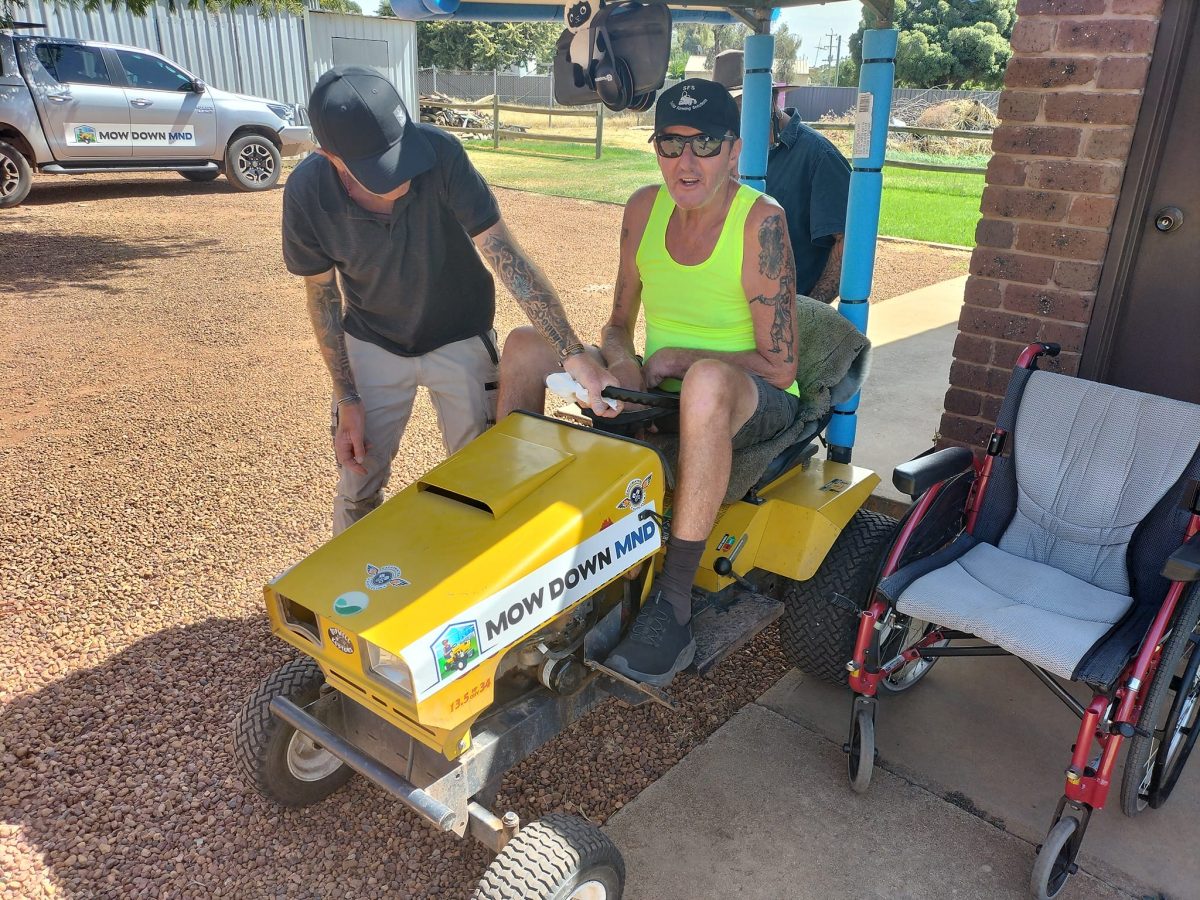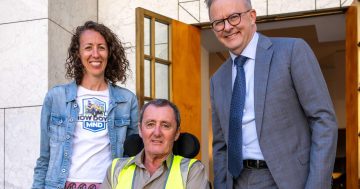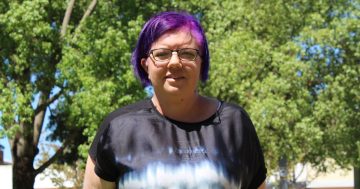
Woz Acott (seated, striped shirt) surrounded by supporters at the Exies Sports Club in Griffith. Photos: Supplied.
A former truck driver’s 800 km trek on a ride-on lawnmower to raise awareness of motor neurone disease (MND) reached the epicentre of the illness on Thursday – Griffith, where its prevalence is seven times the national average.
Eight months ago, Victorian Warren ”Woz” Acott was diagnosed with MND, a mystery illness that damages a person’s nervous system, weakening muscles such that a sufferer loses their ability to walk, speak, swallow and breathe, before they eventually die.
A lack of research and monitoring on MND by the federal and state governments means we don’t know what causes the disease or how to cure it. That’s something Woz is determined to change.
“My dad is trying to get MND recognised as a notifiable disease so that more research can be done on why people are getting it, more tracking can be done on patterns, and eventually find a cure,” daughter Belinda said.
When an illness is classified as a notifiable disease, it means the government is obligated to monitor, record and track cases in each geographical area – giving researchers the data they need to discover causes and cures.
Belinda is supporting her 66-year-old father’s journey. The pair took off from his hometown of Toollen in Victoria to travel to Canberra, with Woz riding a lawnmower along the way as part of his campaign to ”mow down MND”.
Griffith, Coleambally, Leeton and Wagga are key stops on the route, where Belinda is asking people to sign a petition supporting the push for notifiable disease status.

Woz reaches Leeton during his journey to Canberra.
Ultimately, the pair hope to meet Prime Minister Anthony Albanese at Parliament House to present him with that petition.
“Dad really wanted to include Griffith in his trip,” Belinda said. “He’s done a lot of work here. Everyone we have met here knew somebody who has MND, and some people knew multiple people who have passed away from it.”
A 2015 Macquarie University study found the rate of MND in Griffith was seven times higher than the national average. Wagga and Leeton are also considered hotspots for the disease.
Overseas studies suggest exposure to a bacteria known as blue-green algae in waterways over a long period could be a triggering factor linked to high MND rates. Frequent algal blooms in Griffith’s Lake Wyangan have led to speculation that this may be a cause, but a link has not been conclusively proven.
“At the pub, a couple of people we met spoke about Lake Wyangan,” Belinda said.
Macquarie University’s study on MND rates in Griffith was abandoned because the previous NSW Coalition government refused to fund it.
The Minns Labor Government had pledged $2 million to continue research on the causes of MND, but details on how this money will be spent have not yet been released.
Belinda and Woz are keen to see that investment.
“Dad was diagnosed eight months ago and we’ve seen a rapid decline physically,” Belinda said.
“He’s lost the use of his arms and legs and now it’s affected his eating and swallowing.
“We don’t know how it happened … nobody else in our family has had it. That’s why we need to make this a notifiable disease.”
Belinda is hoping an 800-strong crowd – equivalent to the number of people killed by MND each year – shows up on the lawns of Parliament House to support Woz.
More information on Woz’s journey can be found by following the Mow Down MND Facebook group.













